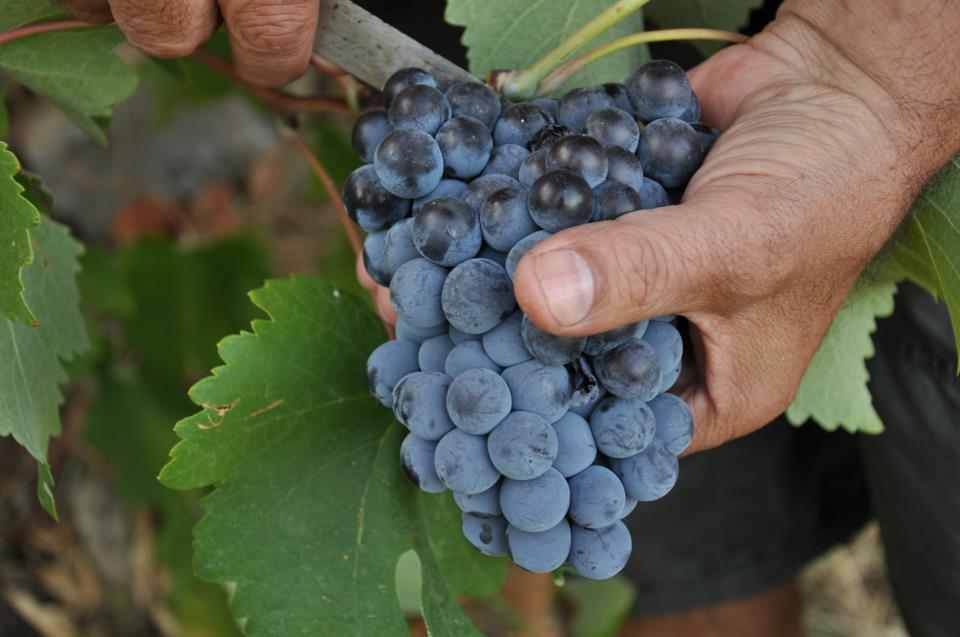Ancient Greek gold earring, c. 4th-3rd c. BC. A winged Eros, riding an Ibex goat and holding a Thrysus staff, symbol of Dionysus...
Sold by Christies
Full of animal and plant calendar markers pointing to Oct/Nov, beginning of winter...
So let's start with Ibex goat. Across their range, Ibex goats start mating in Oct/Nov...At the beginning of winter...And they announce that to the world by loudly banging their heads...Not something you can easily miss...
In Eastern Mediterranean (Crete, Cyprus, Levant), Mesopotamia, Central Asia, Iran), where climatic year is divided into hot dry half and cool wet half, Oct/Nov is also the beginning of the cool wet half of the year.
The time when the first rains arrive...
Crete
The rains which bring rebirth of nature...
Officially: "Golden ring depicting goat sacrifice", Mycenaean, 1500BC. I don't think so. Ibex was in Minoan, and later Mycenaean culture linked to rain season and regeneration of nature. This could be sacrificing to the Goat (of rain), not of a goat...I talked about this in my post "Theseus ring"...
The observed overlap between the beginning of the Ibex goat mating season and the arrival of the rains, turned Ibex goat into The Goat of Rain...I talked about this in my post about this Neolithic vessel from Tepe Hissar, Iran
Which is why in Iran, Ibex goat is one of the most depicted animals...
And one of the first deified animal calendar markers...I talked about this in my post "Goat petroglyphs from Iran"...
As for Europe, what do you think Pan is? Ever thought why Pan is "The Old God"...Pan riding a goat. Boscotrecase, Italy, 45–50 CE, plaster and pigment, The Bible Lands Museum, Jerusalem
I talked about this in my post "Pan, god of rain"...
Here is Pan depicted with Dionysus on a sarcophagus fragment, Ashkelon, ca. 1st–3rd century CE, marble, Israel Antiquities Authority...The god of resurrection welcomes the arrival of the Goat God...
Why do you think cornucopia was originally an actual goat horn which belonged to Amalthea, the Ibex goat that suckled infant Zeus (god or rain) on Crete...Goat of rain suckled God of rain...Cool...Dionysus and Plutos with cornucopia...
I talked about this in my post "Cornucopia"...
More about deified goat of winter (and rain) in Europe can be found in my post "Goat in European culture"
Ok...That's goat sorted...It is an animal calendar marker that points to Oct/Nov...What else is there that points to Oct/Nov, beginning of winter?
Thyrsus, the staff of Dionysus...I talked about it in my post "Thyrsus"
Thyrsus stick was made from a stalk of a giant fennel. It had a pine cone stuck to its top. The stick was then wrapped with ivy and grape vines...
In Ancient Greek mythology, when Prometheus stole fire from Zeus, he brought it to people by hiding it in the hollow stalk of the giant fennel...
Here he is, with fennel torches...
So am I wrong to think that the Thyrsus fennel stick symbolizes the power of Zeus, thunder (and rain) god? I mean, fire stolen by Prometheus was the product of Zeus's lightning...
And as I said, in Eastern Mediterranean (Crete, Cyprus, Levant), Mesopotamia, Central Asia, Iran) the Goat (sorry God) of rain arrives in Oct/Nov...
So a lightning fire stick...Wrapped with grape vines...Grape vines without grapes...You know how Dionysus is a god of wine...Which is made after the grape harvest...Which lasts from Aug to Oct...
So grape vines on the Thyrsus staff of Dionysus mark the end of the grape harvest Oct/Nov...And beginning of wine making...And the time when saffron crocuses, another symbol of winter, start flowering...I talked about this in my post "Crocus fairy"...
So a lightning fire stick...Wrapped with grape and ivy vines...Ivy with fruits...See these little dots between the ivy leaves? I talked about this in my post "Furious maenads"...
Interestingly, Ivy flowers in September to November, after the grapes are harvested, and its fruits ripen in November to January...So the ivy fruit season spans the whole of winter. The time of Dionysus...I talked about this in my post "Woman and pitcher"...
So a lightning fire stick......Wrapped with grape and ivy vines...And topped with a pine cone...Pine cones which are ripe and ready to harvest from Oct/Nov... I talked about this in my post "Eagle dude from Aleppo"...
So I think that all this would make Thyrsus a very good symbol of the arriving winter rain season...The season of Dionysus...Which in Eastern Mediterranean (Crete, Cyprus, Levant), Mesopotamia, Central Asia, Iran) brings resurrection of nature...
Which is also the time when Ibex goats have loads of sex...Minoan seal depicting mating ibex goats...
Here is a good article talking about the link between goats and Dionysus, "Patera of Rennes", which analysis the Dionysia scenes depicted on this beautiful Roman gold bowl dated to c. 210 AD. found in France and currently kept in the Bibliothèque nationale de France...
Oh, and why is it Eros who is riding on an ibex goat and holding a thyrsus? Apparently, the Orphics thought that Dionysus was an incarnation of the primordial Eros, the first ruler of the universe...Is this why?
2nd century AD Roman marble sculptured of Dionysus and Eros...
























What I like about pine cones is that they can "predict" weather - they open in dry days weather and let wind carry the seeds away from the parent tree. On humid days pine cones remain closed, so that the seeds don't fall too close. Everybody can have such a weather station, or Thyrsus if you prefere, at home :)
ReplyDelete